Chewing is a fundamental behavior in dogs, deeply rooted in their natural instincts and ancestral heritage. This behavior, while sometimes frustrating for dog owners, serves important purposes for dogs and is a key part of their development and well-being.
The grasping the reasons behind it is essential for managing and preventing it. In this article, we will discuss the typical causes of this behavior and offer practical advice on how to stop it.
A) What causes dogs to develop a habit of chewing on furniture?
1. Origins of the Chewing Instinct
Dogs’ chewing habits can be traced back to their wild ancestors, where chewing was essential for survival. In the wild, chewing helped maintain dental health by cleaning teeth and reducing plaque buildup. It also played a critical role in strengthening jaw muscles, which was necessary for hunting and eating prey. Additionally, chewing provided mental stimulation, helping wild dogs stay alert and engaged with their environment.
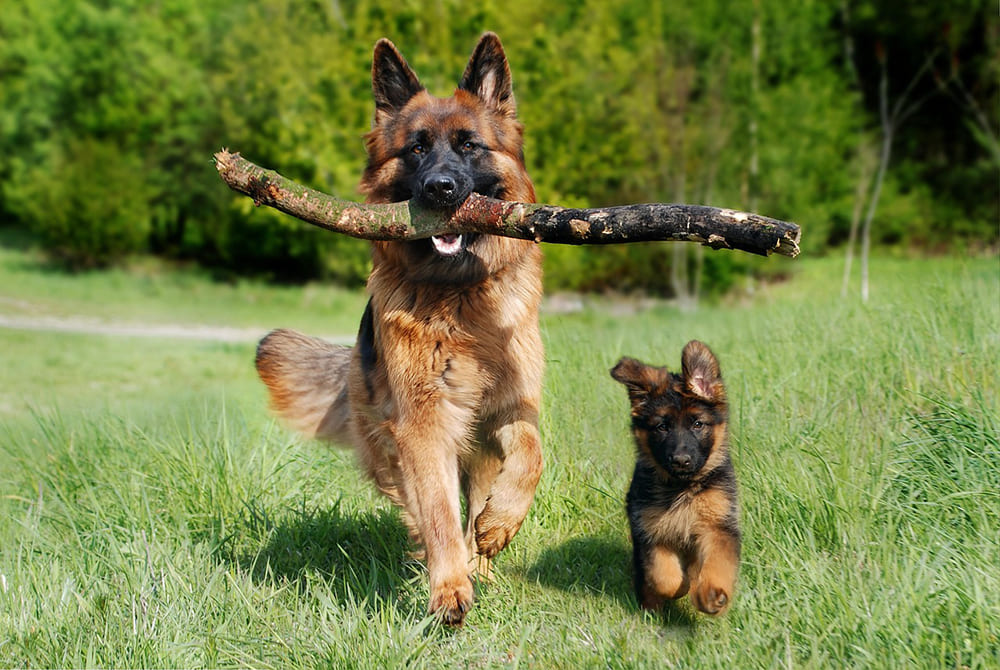
Even after domestication, dogs retain this instinctual behavior. However, without the same environmental challenges and stimuli as their wild counterparts, domestic dogs often redirect their chewing tendencies to household items, such as furniture, shoes,…
2. Separation Anxiety in Dogs
Dogs are inherently social animals, forming deep, emotional bonds with their human companions. This strong attachment is a significant part of their nature, making them loyal and affectionate pets. However, this same social nature can lead to issues like separation anxiety when dogs are left alone for extended periods. One of the most common manifestations of this anxiety is destructive chewing.

Separation anxiety in dogs occurs when they become distressed due to the absence of their owners. This condition is more than just a mild inconvenience for the dog; it can lead to significant stress and behavioral issues. When left alone, dogs with separation anxiety may feel abandoned or unsafe, triggering behaviors aimed at self-soothing or attempting to reunite with their owners.
One of the most notable behaviors associated with separation anxiety is destructive chewing. Dogs might chew on furniture, shoes, or other household items as a way to cope with their anxiety.
3. Puppy Teething Phase
Puppy teething is a natural and inevitable phase in a young dog’s development, usually occurring between the ages of three to six months. During this period, puppies experience significant changes in their mouths as their baby teeth fall out and adult teeth emerge. This process can cause considerable discomfort and tenderness in their gums, prompting them to seek relief through chewing.

As puppies go through teething, their gums can become sore, swollen, and itchy. This discomfort drives them to chew on anything they can find, from furniture to shoes, in an attempt to soothe their aching mouths. Chewing provides a form of massage for their gums, helping to alleviate pain and assist in the cutting of new teeth.
Teething is a temporary phase, but it can be challenging for both puppies and their owners. Understanding that this behavior is a normal part of their development can help you approach it with patience and empathy. By providing appropriate outlets for their chewing instincts and ensuring their comfort, you can help your puppy transition through teething with minimal stress.
4. Seeking Attention Through Chewing
Chewing is a natural behavior for dogs, but when it turns destructive, such as chewing on furniture, it can be a sign that your dog is seeking attention. Interestingly, some dogs engage in this behavior precisely because it elicits a reaction from their owners, even if that reaction is negative.
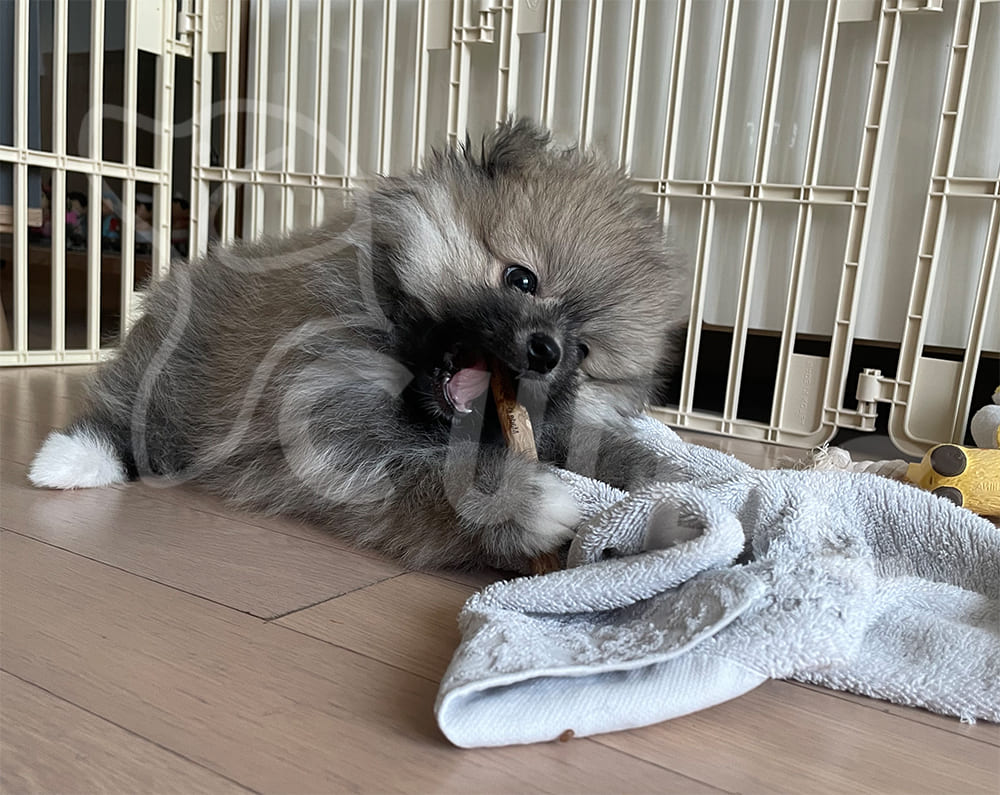
When a dog learns that chewing on furniture gets them noticed, they may continue to do so to keep getting that attention. This behavior can become a persistent issue if not addressed properly. Negative reactions, such as scolding or punishment, might temporarily stop the chewing, but they often reinforce the behavior by giving the dog what it wants: your attention.
5. Health Concerns
Excessive chewing in dogs can be more than just a behavioral issue; it might signal underlying health problems such as dental issues or gastrointestinal discomfort. If your dog suddenly starts chewing more than usual, it could be a sign that something is wrong.
Dental problems, like tooth decay or gum disease, can cause discomfort that leads a dog to chew excessively as a way to alleviate pain. Similarly, gastrointestinal issues might prompt dogs to chew more in an attempt to soothe their stomachs or esophagus.
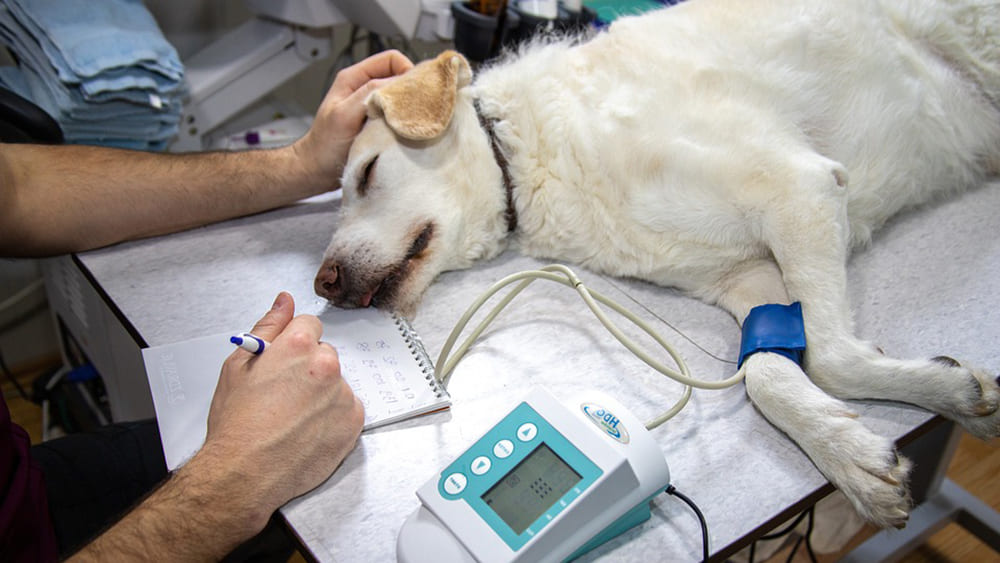
Observing a sudden increase in chewing behavior warrants attention and should prompt a visit to the veterinarian. A professional evaluation can help rule out or diagnose medical conditions that might be causing the behavior. By addressing the root cause, you can help your dog return to its normal, healthy self.
B) How can I prevent my dog from chewing on the furniture?
To prevent your dog from chewing on furniture, it’s essential to use a mix of approaches that redirect their chewing habits, offer suitable alternatives, and tackle any underlying causes of the behavior. Here are some effective tips to help curb your dog’s furniture chewing:
1. Offer Suitable Chew Toys:
Provide your dog with a variety of safe and sturdy chew toys. Select toys that promote dental health and match your dog’s size and chewing habits. Rotate these toys regularly to maintain your dog’s interest.
If your dog prefers chewing on wooden furniture, consider giving them natural, long-lasting wooden chews like CWDC Coffee Wood Chews and Gorilla Coffee Wood Chews. These options are 100% natural and free from toxic chemicals, ensuring your dog’s safety. Other excellent alternatives to protect your furniture include Coffee Wood Rope Nunchaku and Coffee Coco Chews.

2. Using Pet-Safe Bitter Sprays to Deter Chewing Behavior
Pet-safe bitter sprays offer an effective solution for discouraging dogs from chewing on furniture. These sprays are formulated with tastes and scents that dogs generally find unpleasant, helping to deter them from chewing on treated surfaces.
By applying pet-safe bitter sprays to furniture areas where your dog tends to chew, you create an environment that discourages unwanted behavior without causing harm. The bitter taste and odor act as a deterrent, prompting dogs to avoid chewing on these surfaces.

This approach is widely recommended by veterinarians and dog trainers as a safe and humane method to protect furniture and redirect chewing behavior. It’s important to follow product instructions carefully to ensure effectiveness and safety for your pet.
Using pet-safe bitter sprays can be a valuable tool in your efforts to train your dog and maintain a harmonious home environment. Combined with positive reinforcement and appropriate chew toys, it helps encourage desirable behavior while minimizing destructive habits.
3. Supervise and Manage Your Dog’s Environment
When you’re unable to directly supervise your dog, it’s beneficial to confine them to a secure area like a crate or a dog-proofed room. This helps limit their access to furniture and decreases the chances of destructive behavior.

Additionally, utilize baby gates or pet barriers to restrict access to specific areas of your home. This proactive measure ensures that your dog stays in areas where they are safe and where their chewing behavior can be effectively managed.
4. Exercise and Mental Stimulation
Make sure your dog receives adequate physical exercise through regular walks, play sessions, and engaging activities. A tired dog is less likely to exhibit destructive behaviors due to boredom.
Teach your dog fundamental obedience commands, use positive reinforcement consistently, rewarding good behavior with tasty natural treats or verbal praise.
Whenever you catch your dog chewing on furniture, redirect their attention to suitable chew toys. Praise and reward them immediately when they choose the appropriate items, reinforcing the positive behavior. Maintaining consistency is crucial when training your dog. Ensure that rules are consistently enforced and positive behaviors are promptly rewarded. Inconsistencies can lead to confusion for your dog and diminish the effectiveness of training efforts.
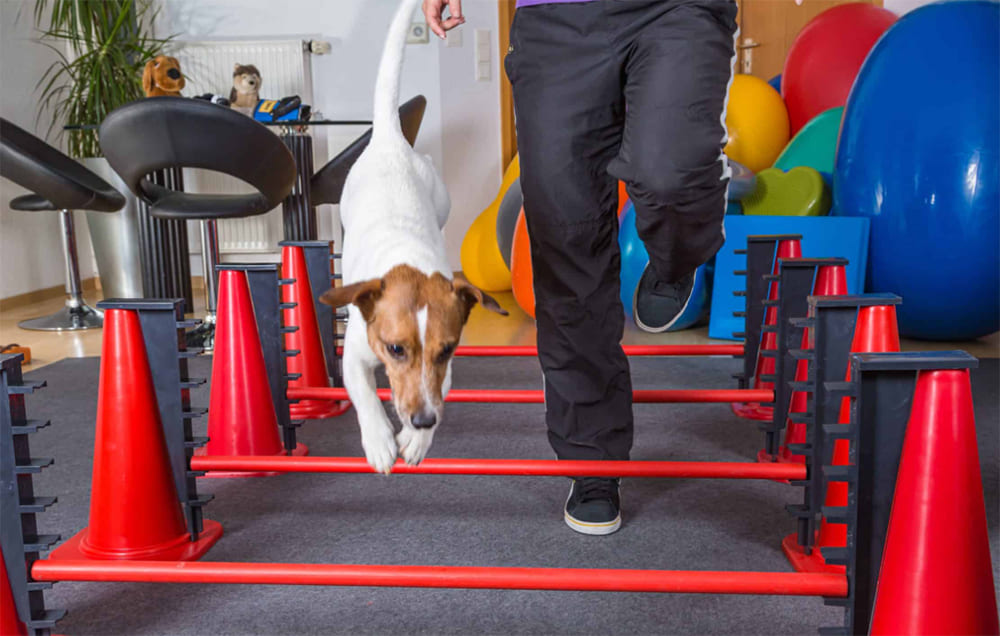
Integrate mental stimulation into your dog’s daily routine by incorporating toys such as Coffee Wood Toys, Coco Husk Balls, Hemp Rope Balls on a Loop, or engaging in training sessions. These enrichment activities provide mental challenges that help prevent boredom and keep your dog entertained and fulfilled.
5. Address Anxiety and Boredom
If your dog is chewing because of separation anxiety, work on gradually desensitizing them to being alone. Begin with short periods of separation and slowly increase the duration over time.

For cases where chewing behavior is linked to anxiety or stress, seeking assistance from a professional dog trainer or behaviorist can be beneficial. They can provide specialized guidance and techniques to help manage your dog’s anxiety and address the underlying causes of the behavior.
6. Consulting with a Veterinarian
When your dog’s chewing behavior persists or suddenly becomes severe, consulting with a veterinarian is essential to identify and address potential medical issues. Such behaviors can often indicate underlying health concerns, including dental problems or gastrointestinal discomfort. A veterinarian can provide a thorough examination to rule out these issues and recommend appropriate treatment or management strategies.
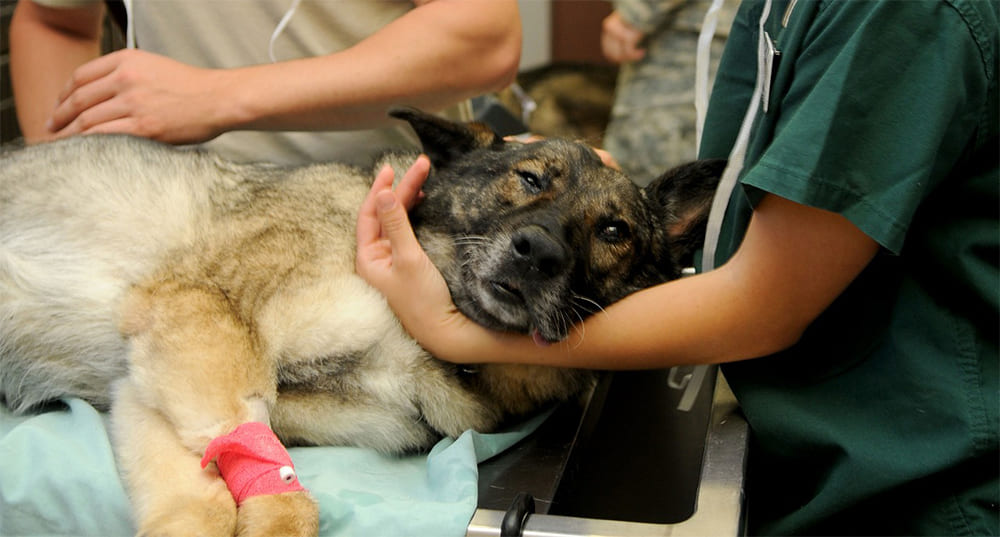
By seeking veterinary advice promptly, pet owners can ensure their dog’s well-being and take proactive steps to resolve any underlying health issues contributing to the chewing behavior. Early intervention not only helps in alleviating discomfort but also promotes a healthier and happier life for the dog. It underscores the importance of vigilant observation and timely veterinary care in maintaining the overall health and behavior of our beloved pets.
C) Conclusion
When tackling your dog’s habit of chewing on furniture, patience and positive reinforcement play pivotal roles in achieving success. It’s important to understand that breaking this habit can be a gradual process, requiring consistent effort and dedication.
Patience is key as your dog learns new behaviors and adjusts to using appropriate chew toys instead of furniture. It’s natural for this transition to take time, so maintaining a calm and persistent approach is essential.
Consistency is equally vital. Reinforce desirable behavior by consistently redirecting your dog to appropriate chew toys and promptly rewarding them for making the right choices. Positive reinforcement, such as praise or small treats, reinforces the behavior you want to see more of, encouraging your dog to repeat these actions.
By combining patience, consistency, and positive reinforcement, you create an environment where your dog learns and thrives. Remember, each dog learns at their own pace, so celebrate small victories and stay committed to guiding your dog towards more appropriate chewing habits.
Related Posts:
- How Coconut Chew Toys Can Help Prevent Destructive Chewing
- Coffee Wood Toy - The Advantages of a Farmer's Workforce in the Central Highlands of Vietnam
- Java (Coffee) Wood Tree Bird Perch / Artificial Java (Coffee) Tree Plant for Home Decor Indoor or Outdoor Office…
- Natural Beauty Meets Function: The Unique Appeal of Java Wood Tunnels and Hideouts
- Are coffee wood chews safe for dogs ? A Comprehensive Look
- Coffee Wood from Vietnam: The Ideal Material for Dog Chews








